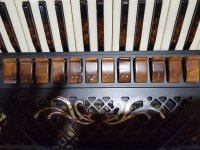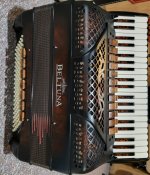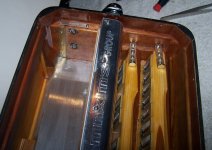Bloviator
Member
I have another brand with Amplisound and leave it on the majority of the time.I was wondering why it would then not be the one with switchable Amplisound. Possible answers I came up with:
a) The switching mechanism might not be entirely reliable so they are removing a possible problem point.
b) they don't want the choice in order to avoid listeners saying "I've heard the Spirit and its cassotto sound wasn't as pronounced as Bugari's" (say) because the player chose not to use the Amplisound.
c) weight/space reasons
d) the Goldilucks effect: the switchable Amplisound is either too much or too little, the Spirit has it just right
e) the switchable Amplisound cannot be as strong as a fixed Amplisound
It does change the sound, but the sound was good to begin with you can flicking it on and off to try and figure what sounds better. Not better or worse.
It's common for me to go to turn it off only to realize it has been off. So for the sake of flipping a switch I then turn it on.





